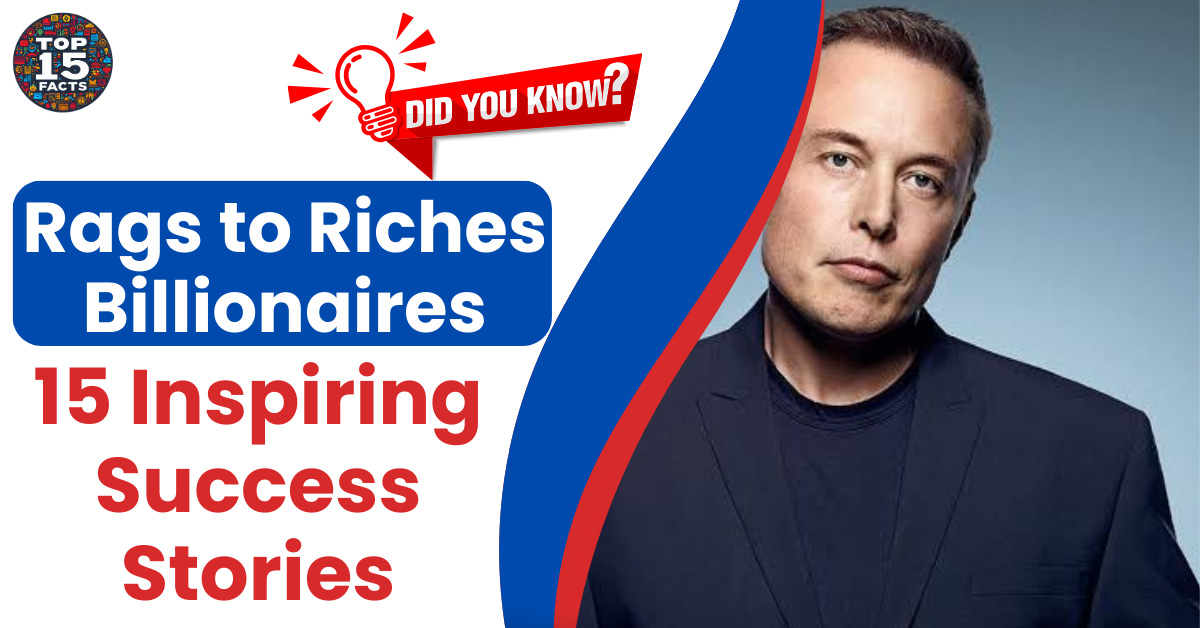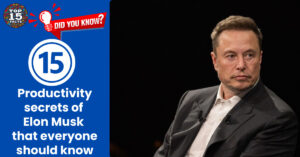Introduction
The path from rags to riches is a testament to human resilience, ambition, and the potential for anyone to overcome adversity and achieve monumental success. Self-made billionaires embody this idea, defying expectations and building vast fortunes through their own ingenuity. Their stories offer valuable insights into overcoming challenges, seizing opportunities, and finding the drive to succeed.
15 Rags to Riches Billionaires:
- Oprah Winfrey – Born into poverty, overcame childhood abuse to become a media mogul.
- Elon Musk – South African immigrant, risked everything to revolutionize industries.
- Do Won Chang & Jin Sook Chang – Korean immigrants founded Forever 21 fashion empire.
- Leonardo Del Vecchio – From orphanage to Luxottica eyewear leader.
- Mohed Altrad – Born to a Bedouin tribe, now a French construction billionaire.
- Li Ka-shing – From factory worker to Hong Kong’s wealthiest person.
- Roman Abramovich – Orphaned Russian who built a global business empire.
- Harold Hamm – Son of sharecroppers, became an oil tycoon.
- Shahid Khan – Pakistani immigrant, now owns NFL’s Jacksonville Jaguars.
- John Paul DeJoria – Homeless twice, built haircare and tequila empires.
- Howard Schultz – Grew up in housing projects, transformed Starbucks.
- George Soros – Survived Nazi occupation, became a legendary investor.
- Ken Langone – Son of a plumber, co-founded Home Depot.
- Sheldon Adelson – Grew up poor in Boston, rose to casino magnate.
- Larry Ellison – Abandoned by birth mother, co-founded Oracle software giant.
1. Oprah Winfrey:

Frederic J. Brown—AFP/Getty Images
Life: Born into extreme poverty in Mississippi, Oprah Winfrey’s childhood was marked by hardship and abuse. Her resilience was evident early, as she excelled in school and became a public speaking champion.
Mistakes and Failure: Early in her broadcasting career, Oprah was demoted from a news anchor position due to being perceived as “too emotionally invested” in her stories. This setback devastated her, but it fueled a pivotal shift in her approach to communication.
Steps to Success: Oprah embraced her empathetic and authentic style, pioneering the confessional talk show format. She understood that sharing vulnerability and connecting on an emotional level resonated deeply with her audience. This, combined with her entrepreneurial instincts, led her to create her production company, Harpo, and build an empire spanning television, film, magazines, and more.
Learning: Oprah’s story teaches us:
- Turn adversity into strength: Her difficult experiences forged her resilience and determination.
- Authenticity is powerful: People connect with those who are real and relatable.
- Never stop evolving: She continually reinvented herself, finding new ways to connect with her audience.
2. Elon Musk:

Image Source: britannica
Life: As a South African immigrant, Musk faced bullying and struggled to find his place. His relentless curiosity and ambition drove his early ventures in internet technology.
Mistakes and Failure: He has faced numerous failures: rocket launches exploding, companies near bankruptcy, and public criticism. He persevered through each setback.
Steps to Success: His relentless ambition, willingness to take massive risks, and drive to revolutionize industries are hallmarks of his approach. He envisions a bold future and pursues it with unwavering focus.
Learning: Musk exemplifies these lessons:
- Be audacious: Set goals far beyond the ordinary.
- Embrace calculated risk: Understand risks, but don’t let fear of failure hold you back.
- Focus on impact: Aim to solve real-world problems and reshape industries.
Read More: Top 15 Mind-Blowing Space Facts That Will Change Your Universe
3. Do Won Chang & Jin Sook Chang:

Life: After immigrating to the US from South Korea, the Changs worked multiple low-wage jobs to survive. Their keen eye for opportunity sparked a brilliant entrepreneurial journey.
Mistakes and Failure: Their initial business ventures met with limited success and financial struggles, testing their resilience.
Steps to Success: They identified a niche – affordable, trendy fashion for young women – creating the brand Forever 21. Their ability to adapt quickly to fashion trends, combined with a low-cost manufacturing model, led to explosive growth.
Learning: They illustrate the importance of:
- Finding a market niche: Identifying underserved needs creates unique opportunities
- Adapting to trends: Staying ahead of the curve is essential in fast-paced industries
- Controlling costs: Efficient operations are key to offering value and maximizing profits
4. Leonardo Del Vecchio
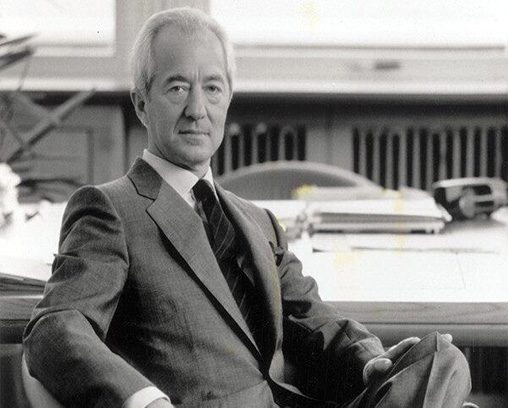
Life: Born into poverty in Italy, Del Vecchio was sent to an orphanage as a young child. He began his working life as an apprentice in a tool and die factory, specializing in parts for eyeglasses.
Mistakes and Failure: Del Vecchio’s initial ventures faced production challenges and slow initial sales, forcing a difficult path of learning business operations along with the technical side.
Steps to Success: He saw an opportunity to revolutionize the eyeglass industry by controlling the entire process, from design to manufacturing and retail. He created Luxottica, which now owns brands like Ray-Ban, Oakley, and licenses countless fashion brands. His relentless focus on quality and building a global retail network made Luxxotica an eyewear powerhouse.
Learning: Del Vecchio’s success demonstrates:
- The power of specialization: Deep expertise in a niche area can lead to market domination.
- Vertical integration: Controlling all aspects of production and distribution maximizes control and profits.
- Never stop learning: Del Vecchio constantly adapted, learning new skills and expanding his business acumen.
5. Mohed Altrad
Life: Born into a nomadic Bedouin tribe in Syria, Altrad experienced extreme poverty and the loss of his mother at a young age. A scholarship took him to France, where he faced discrimination and challenges as an outsider with limited French language skills.
Mistakes and Failure: His early attempts to fit in with established French society failed, demonstrating the difficulty of leaving behind one’s roots and assimilating into a new culture.
Steps to Success: His exceptional skills in mathematics and computer science led him to a successful career in technology and eventually the purchase of a failing scaffolding company. He turned this business around, expanded through acquisitions, and now leads a global construction empire.
Learning: Altrad’s story teaches us:
- Education is transformative: Investing in knowledge opens incredible doors.
- Embrace your background: Unique experiences shape perspectives and offer a competitive edge.
- Never underestimate hard work: Success usually comes through relentless effort and determination.
Read More: Biggest Business Blunders: 15 Mistakes and Lessons Learned
6. Li Ka-shing
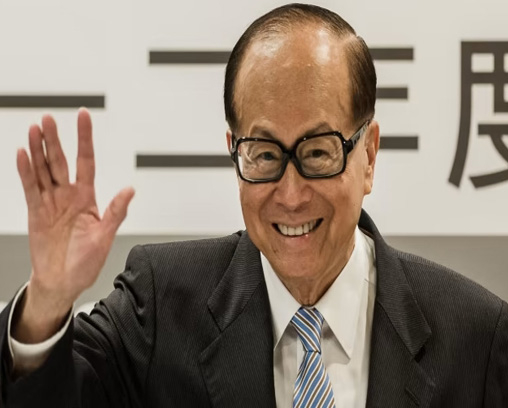
Life: Born in mainland China, Li Ka-shing’s family fled to Hong Kong during the Japanese occupation. His father’s passing when he was young forced him to quit school and become his family’s breadwinner, working in a plastics factory.
Mistakes and Failure: Li Ka-shing started his entrepreneurial journey with a plastics manufacturing company. He initially struggled to compete in a crowded market, facing limited resources and stiff competition.
Steps to Success: Li Ka-shing possessed incredible foresight. He transitioned from manufacturing to real estate investment early on, recognizing the potential in Hong Kong’s booming property market. He built a diverse business empire spanning ports, telecommunications, retail, and energy. His keen focus on long-term investments and strategic acquisitions led to immense success.
Learning: Li Ka-shing’s rise highlights:
- The power of timing: Identifying trends and capitalizing on economic shifts is crucial.
- Diversification is key: Building a portfolio across industries reduces risk and maximizes growth.
- Think long-term: Focus on sustainable businesses with enduring value.
7. Roman Abramovich

Life: Orphaned at a young age in Russia, Abramovich was raised by his relatives in difficult conditions. He demonstrated entrepreneurial tendencies from an early age, pursuing small-scale business ventures even during his mandatory military service.
Mistakes and Failure: Due to the chaotic environment surrounding the collapse of the Soviet Union, some of Abramovich’s early businesses were shrouded in controversy and allegations of corruption.
Steps to Success: He leveraged opportunities during Russia’s privatization of industries in the 90s, acquiring ownership of oil and aluminum companies at favorable terms. His strategic partnerships with powerful political figures propelled his business growth. He became known for acquiring high-value assets, like the Chelsea Football Club, cementing his global influence.
Learning: Abramovich’s story raises complex questions:
- Navigating grey areas: Pushing boundaries between legality and opportunistic deal-making can be a path to quick wealth but can also raise ethical concerns.
- The power of influence: Cultivating powerful connections was key to his rapid business expansion.
- Calculated risk: Abramovich embraced ventures with high risk but potentially enormous financial rewards.
Read More: Top 15 Financial Innovations that Changed the World | History & Impact
8. Harold Hamm
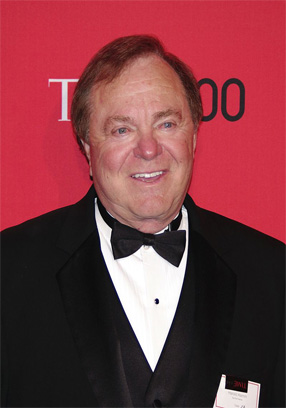
Life: Hamm was born into a family of sharecroppers in Oklahoma, the youngest of 13 children. Poverty defined his early life; his family often lived without electricity or running water. He displayed a tireless work ethic from a young age, starting in the oil industry by cleaning out storage tanks.
Mistakes and Failure: Hamm faced numerous setbacks throughout his career, including oil market downturns, lawsuits, and the challenges of managing a large, complex oil business. He was known for a stubborn and uncompromising attitude, which sometimes led to friction with partners or employees.
Steps to Success: Hamm was a pioneer in the use of hydraulic fracturing (“fracking”) technology, unlocking oil reserves in shale formations that were previously considered inaccessible. This controversial technique became a game-changer, revolutionizing the US oil industry. As the CEO of Continental Resources, he aggressively acquired drilling rights, creating a massive land position in the Bakken Formation that drove his wealth.
Learning: Hamm’s life teaches us:
- Never underestimate humble beginnings: Hard work and ambition can overcome any origin.
- Embrace innovation: Being a disruptor in traditional industries can yield immense profits.
- Persistence is paramount: Hamm faced criticism and hurdles, yet relentlessly pursued his vision.
9. Shahid Khan
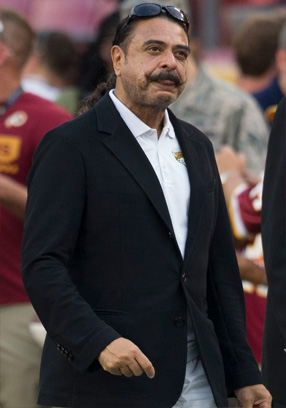
Life: Born in Pakistan, Khan immigrated to the United States with only $500 in his pocket. He worked tirelessly, washing dishes and pumping gas, while attending college at night. His entrepreneurial spirit led him to purchase a struggling gas station in Champaign, Illinois, which he turned into a successful chain.
Mistakes and Failure: Khan’s early ventures weren’t always smooth sailing. He faced challenges in expanding his gas station business and navigating the complexities of the American market.
Steps to Success: Khan’s relentless drive and strategic acquisitions propelled him forward. He diversified his holdings by acquiring automotive parts manufacturer Flex-N-Gate, transforming it into a global giant. He even purchased the Jacksonville Jaguars NFL team, showcasing his ambition beyond traditional business sectors.
Learning: Khan’s story emphasizes:
- The value of hard work: His dedication and willingness to take on any job laid the foundation for success.
- Identifying opportunities: Khan saw potential in a struggling gas station, demonstrating his ability to spot hidden value.
- Thinking big: He wasn’t content with small wins, constantly seeking ways to expand and diversify his business empire.
10. John Paul DeJoria
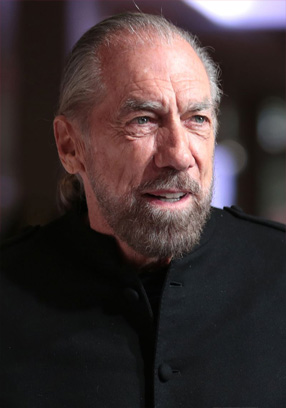
Detailed Explanation: DeJoria’s life is a testament to overcoming adversity and never giving up. He spent two separate periods homeless in his early twenties, but his entrepreneurial spirit and drive remained undimmed.
Mistakes and Failure: Early ventures, including a hair care product launch, met limited success. DeJoria learned valuable lessons about marketing and building a brand from these initial setbacks.
Steps to Success: DeJoria co-founded John Paul Mitchell Systems with Paul Mitchell, focusing on high-quality hair care products for professional stylists. This company experienced explosive growth, paving the way for DeJoria to co-found Patrón tequila. Both brands continue to be market leaders in their respective categories.
Learning: DeJoria’s journey highlights:
- Resilience in the face of hardship: He never allowed setbacks to define him, always striving for more.
- Finding the right partner: Collaboration with Paul Mitchell helped him leverage expertise and achieve remarkable success.
- Adaptability and learning: DeJoria constantly learned from his mistakes and adjusted his strategies.
Read More: Top 15 Surprising Ways Social Media Impacts the Economy
11. Howard Schultz
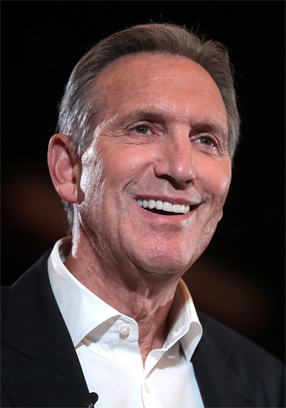
Credit: Gage Skidmore
Life: Schultz grew up in Brooklyn’s housing projects, witnessing firsthand the challenges faced by those living in poverty. He experienced the transformative power of education, earning a college degree that opened doors to opportunity.
Mistakes and Failure: While working for Starbucks, Schultz recognized its potential beyond a single Seattle coffee shop. However, his initial attempts to convince the founders to expand were met with resistance.
Steps to Success: Schultz left Starbucks temporarily, but his vision for the company wouldn’t be silenced. He raised capital and bought Starbucks, transforming it into a global coffee giant. He emphasized customer experience, high-quality coffee, and a welcoming atmosphere, creating a brand with immense consumer loyalty.
Learning: Schultz’s story offers valuable insights:
- Education unlocks opportunities: A college degree empowered him to pursue his career aspirations.
- Believing in your vision: He never gave up on his ideas for expanding Starbucks, even when faced with initial opposition.
- Focus on customer experience: Schultz prioritized creating a welcoming atmosphere that kept customers coming back for more.
12. George Soros

Life: A Holocaust survivor who fled Nazi-occupied Hungary, Soros witnessed the horrors of war and the importance of fighting for freedom. He emigrated to the United Kingdom and later the United States, where he pursued a career in finance.
Mistakes and Failure: Soros made some investment bets that didn’t pay off, experiencing financial losses along the way. However, he learned from his mistakes and adapted his strategies.
Steps to Success: Soros developed a unique investment philosophy, employing macroeconomics and fundamental analysis to make bold market bets. He gained fame for “breaking the Bank of England” by shorting the British pound during the 1992 Black Wednesday crisis. His hedge fund, Soros Fund Management, became one of the most successful in history.
Learning: Soros’s story teaches us:
- The importance of perseverance: Overcoming unimaginable hardship fueled his determination to succeed.
- Learning from mistakes: Financial losses didn’t deter him, instead, they shaped his investment approach.
- Thinking outside the box: Soros’s unconventional strategies challenged the status quo and yielded tremendous rewards.
Read More: 15 Mind-Blowing Facts About the Global Economy | Unveiled
13. Ken Langone
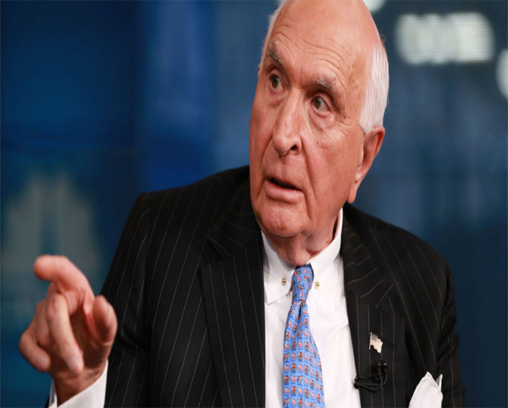
- Life: The son of a plumber and a cafeteria worker, Langone worked his way through college with blue-collar jobs, demonstrating a relentless work ethic. He began his finance career on Wall Street.
- Mistakes and Failure: Like most successful investors, Langone made early career mistakes he learned from, refining his strategies and developing his business acumen.
- Steps to Success: Langone’s keen eye for undervalued companies and his ability to orchestrate leveraged buyouts led his career rise. He co-founded Home Depot, recognizing the untapped potential for a big-box home improvement retailer – a revolutionary concept at the time.
- Learning: Langone teaches us:
- Don’t shy away from hard work: His blue-collar background paved the way for success.
- Seizing potential: Identify gaps in the market and capitalize on unmet consumer needs.
14. Sheldon Adelson
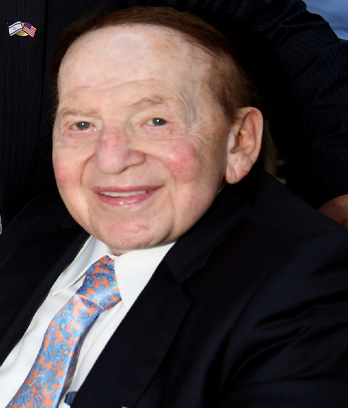
- Life: Growing up poor in Boston, Adelson started businesses from a young age. He demonstrated ambition and an unwavering entrepreneurial drive early in his life.
- Mistakes and Failure: Multiple ventures failed, but he learned from each and continued pursuing opportunities. His casino business also faced controversies.
- Steps to Success: Adelson transformed the Las Vegas convention industry with lavish hotels and integrated entertainment. He expanded his casino empire to Macau, becoming a global luxury resort magnate.
- Learning: Adelson’s story highlights:
- Persistence after setbacks: Not letting failures stop him from pursuing new opportunities.
- Bold vision: Creating extravagant casino properties differentiated him in a competitive market.
The Power of Example
While each of these billionaires has a unique story, their paths to success highlight the incredible power of the human spirit to overcome hardship and achieve extraordinary goals.
Read More: The Top 15 Inventions That Changed the World | Discover Their Impact
15. Larry Ellison

Life: Ellison had a complex start to life. Abandoned by his birth mother, he was raised by his aunt and uncle in Chicago. He excelled in mathematics and science, leading him to pursue a career in computer technology.
Mistakes and Failure: Ellison faced challenges in the early days of his software company, struggling to build momentum and secure major clients. He learned crucial lessons about marketing, product development, and client relations during this period.
Steps to Success: Ellison was instrumental in the development of relational database software for corporations and government entities. He co-founded Oracle, and his relentless drive and sharp business acumen propelled the company into an industry leader. Ellison’s aggressive acquisition strategy further expanded Oracle’s reach and influence.
Learning: Ellison exemplifies:
- Technical excellence: His deep knowledge of computer systems formed the foundation for Oracle’s products.
- Bold expansion: Growing Oracle through aggressive acquisitions solidified its market dominance.
- Never settle: Ellison was known for his relentless drive, continually seeking new markets and opportunities.
Conclusion
The extraordinary journeys of these self-made billionaires, who rose from humble beginnings to immense wealth, stand as testaments to the power of the human spirit. While their paths and industries may differ, common threads bind them: resilience in the face of hardship, relentless ambition, a willingness to take risks, and an unwavering belief in their own potential.
Their stories remind us that success, while never guaranteed, is attainable for those willing to work tirelessly, learn from failures, and seize opportunities. These billionaires may inspire us to overcome our own challenges, pursue our dreams, and realize our own potential for achieving great things.
Let their journeys remind us that our starting point does not define our destination. With determination, perseverance, and a willingness to take calculated risks, anyone can make significant strides towards their financial and life goals.
15 FAQs:
-
What are the most common traits found among rags-to-riches billionaires?
Resilience, ambition, risk-taking, hard work, adaptability, and the ability to see unmet needs in the market.
-
Do these billionaires have anything else in common besides difficult beginnings?
Many possess a relentless work ethic and an unwavering belief in their vision, even when others doubted them.
-
Is it possible for anyone to become a billionaire?
While not everyone achieves billionaire status, these stories prove anyone can overcome hardships to find financial success.
-
Does luck play any role in their extraordinary success?
Timing and good fortune can be factors, but preparation and determination are often what allow them to seize opportunities.
-
Were any of these billionaires involved in controversies?
Yes, some faced criticism for their business practices, especially those who amassed wealth in ethically grey areas.
-
Can I find more detailed biographies of these billionaires?
Yes, many have written autobiographies or been featured in books and documentaries that offer in-depth insights.
-
What industries are most represented by these self-made billionaires?
Tech, oil, real estate, finance, retail, and entertainment industries feature heavily among these success stories.
-
Did formal education play a major role in their success?
Some had college degrees, but many prioritized hands-on experience and continuous learning over formal education.
-
What are some surprising facts about these rags-to-riches stories?
Some experienced homelessness, were orphans, or immigrants – showcasing their strength in overcoming challenges.
-
Which of these billionaires gives back the most through philanthropy?
Several are known for donating vast sums to important causes. Research specific billionaires for details on their philanthropy.
-
Can studying these billionaires help me become more successful?
Yes! Learning their strategies, work ethic, and how they overcame challenges can be incredibly motivating.
-
Are there any common criticisms of rags-to-riches billionaires?
Yes, some criticize the extreme wealth accumulation, arguing it contributes to income inequality. Others question whether certain business practices were ethical in the pursuit of vast fortunes.
-
Where can I find stories of self-made millionaires who may be more relatable?
Online resources and books offer countless examples of people achieving financial success on a less extreme scale.
-
What else can I do besides reading about these billionaires to increase my own success?
Set goals, work hard, network, seek mentors, and never give up– actions are more powerful than inspiration alone.
-
Did any of these billionaires start their major wealth-building ventures later in life?
Yes! Some of these stories show that it’s never too late to take risks and build a successful business.

